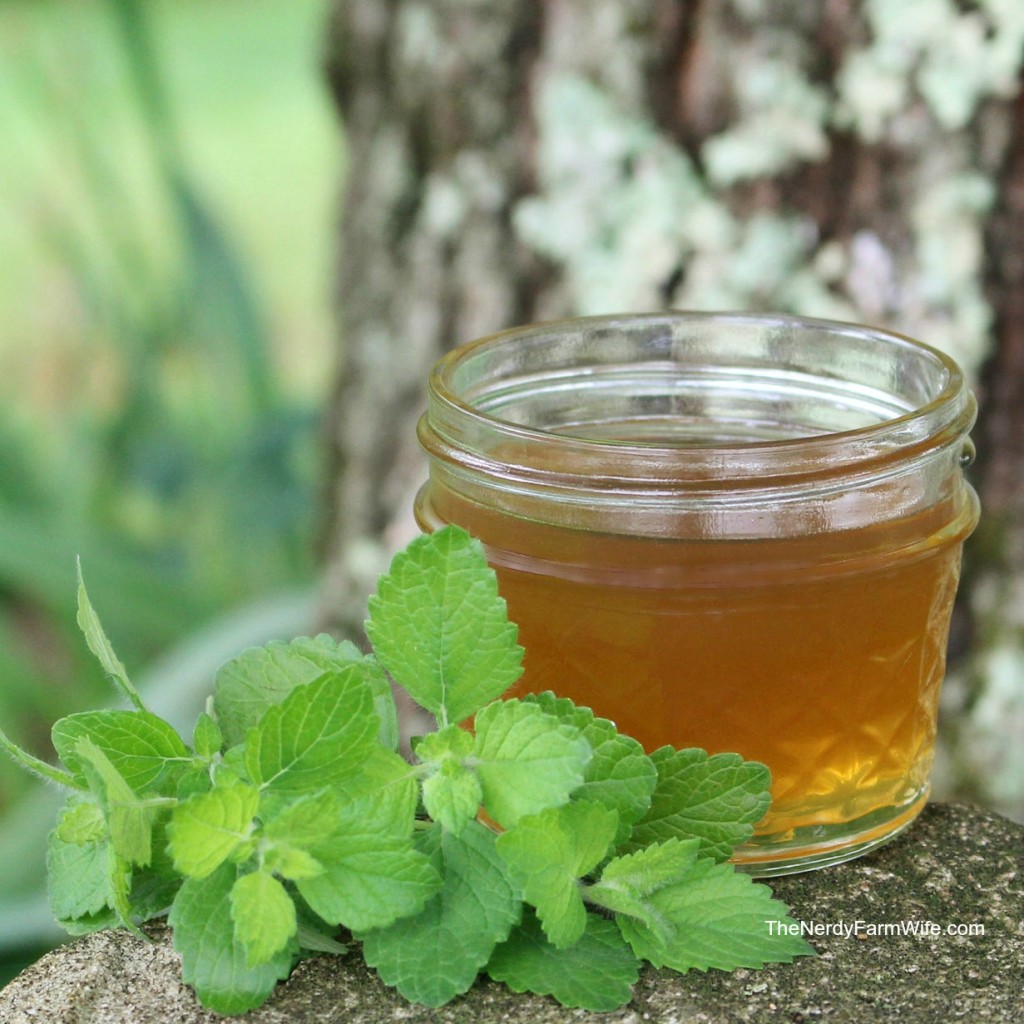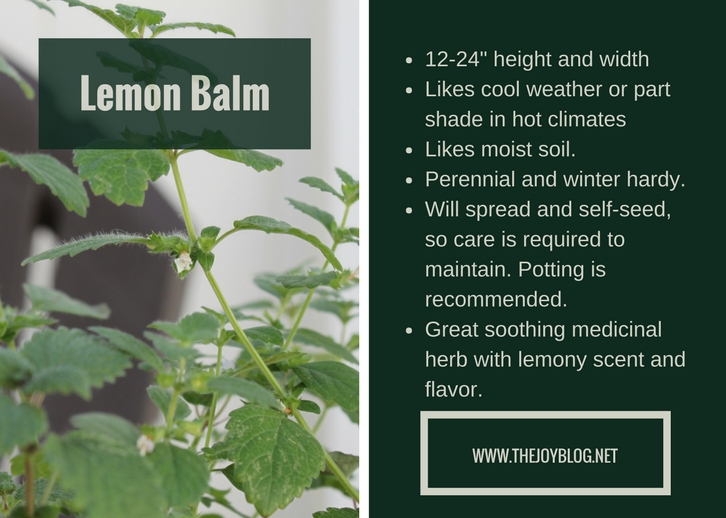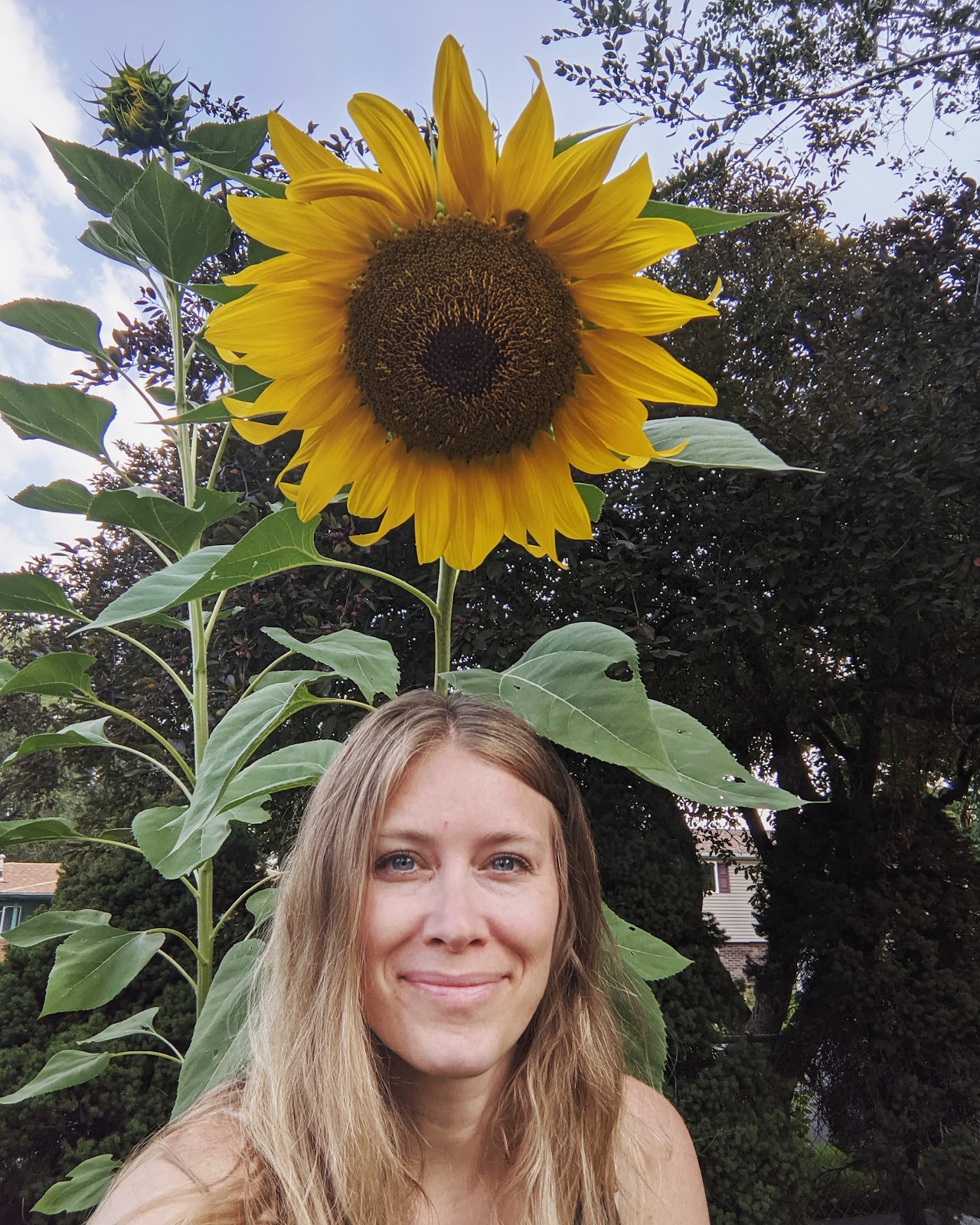Lemon Balm, or Melissa officinalis, is a perennial member of the mint herb family. Its average size is 12-24 inches tall and wide. It does well in cooler weather, and will die back to the ground during the freezing winter. The leaves provide a delicious lemon scent when crushed, or rubbed, and provide a lot of great edible, medicinal, and aesthetic uses.
PLANTING & CARING FOR LEMON BALM
Sow your Lemon Balm seeds 1/4 inch deep. When seedlings are a few inches tall, thin them to 6-8 inches apart, and then once they become larger plants, you can thin them again. Recommended row spacing is 18-24 inches. If planting seedlings, space them 6-12 inches apart. If you're planting in a pot, you can do one plant per 6-8 inch pot. It will spread out and fill the pot during your growing season.
Make sure the to provide your Lemon Balm with a pot or planting site that has good drainage, and water regularly. It does not require regular feedings, but does like to have slightly moist soil. In the fall the plant will die back to the ground. You can either cut it down, or let it die back. It will return in the spring.
Lemon Balm looks great in any garden because of it's beautiful green leaves, and delicate tiny flowers. It can tolerate freezes, and will return every spring because of it's very hardy root system. Lemon Balm likes sunshine, but in hot climates, part shade is much better for it to thrive. Since my patio is so hot all summer, I keep mine in the part shade created by larger pots, and raised beds. This allows it to stay cool and still get the light it needs.
Since plants in the mint family are the virtually indestructible plants of the garden, you can divide, take cuttings, and plant at any time during the growing season. Care is required to ensure it doesn't take over your entire garden. I recommend growing it in a pot to keep the roots from spreading your plant into a forest. Also, avoid letting them flower if you'd like them not to throw seeds. Plants in the mint family self-seed like champions.
Make sure the to provide your Lemon Balm with a pot or planting site that has good drainage, and water regularly. It does not require regular feedings, but does like to have slightly moist soil. In the fall the plant will die back to the ground. You can either cut it down, or let it die back. It will return in the spring.
Special Note: I grow four mint family varieties of herbs, and they have all survived over-watering, under-watering, the appearance of total plant death, and my scorching hot summers and harsh freezing winters. I never fertilize, and I take cuttings whenever I want. They have proven to be unstoppable.
HARVESTING & STORING LEMON BALM
Pinch off leaves and sprigs as you need them. Can be used fresh or dried. For best leaves for drying, you'll want to harvest right before the plant starts blooming in summertime. Dry leaves and sprigs in a warm, shady place, and store them, once dried, in an air tight container.
Research has shown that Lemon balm helps reduce symptoms for some anxiety disorders. It has even been found to improve symptoms of mild or moderate Alzheimer's Disease. Also, Lemon Balm when added to a lip balm, can help shorten the duration of recurring cold sores.

2. Make this refreshing water, or add it to a drink:
Add lemon balm leaves to a pitcher of water, throw in sweet mint leaves, lemon slices or berries, and chill in the refrigerator. Such a refreshing drink during the summer!
Fill a cup or jar with fresh leaves, and pour boiling hot water into the jar, then cover the top and let it steep until it's cool enough to drink. You can sweeten it to taste if needed.
5. Make this Sleepy Time Herbal Syrup from The Nerdy Farm Wife:
Take 3/4 cup Lemon Balm leaves and put into a small sauce pan, add enough water to just cover the leaves. Bring to a boil, and simmer, covered partially, until the liquid is reduced by half. Strain out the leaves. While liquid is still quite warm, measure out 1/2 cup of the lemon balm liquid and stir in 1/4 cup raw honey. Add more honey to taste, as needed.
To adjust batch sizes, make sure to keep ratio to 2 parts Lemon Balm liquid, and 1 part honey. Will store in refrigerator for a week or so. Dose by spoonful at night to help calm and relax. Can be used by children and adults (as per her website). Do not give honey to infants under 1 year old.

WHY TO USE LEMON BALM
Many uses for Lemon Balm have been discovered over thousands of years. The main uses and beliefs about this herb are that it calms the mind, and promotes relaxation, encourages restful sleep, can improve skin appearance, boosts alertness, sharpens memory and problem solving, is a powerful antioxidant, helps encourage normal blood sugar levels, and supports brain health.Research has shown that Lemon balm helps reduce symptoms for some anxiety disorders. It has even been found to improve symptoms of mild or moderate Alzheimer's Disease. Also, Lemon Balm when added to a lip balm, can help shorten the duration of recurring cold sores.
HOW TO USE LEMON BALM
1. The first and easiest use for Lemon Balm is to add pleasant smelling greenery to any bouquet of garden flowers.2. Make this refreshing water, or add it to a drink:
Add lemon balm leaves to a pitcher of water, throw in sweet mint leaves, lemon slices or berries, and chill in the refrigerator. Such a refreshing drink during the summer!
3. Chop fresh leaves and sprinkle on fruit salads.
4. Make a soothing tea for stomach problems: Fill a cup or jar with fresh leaves, and pour boiling hot water into the jar, then cover the top and let it steep until it's cool enough to drink. You can sweeten it to taste if needed.
5. Make this Sleepy Time Herbal Syrup from The Nerdy Farm Wife:
Take 3/4 cup Lemon Balm leaves and put into a small sauce pan, add enough water to just cover the leaves. Bring to a boil, and simmer, covered partially, until the liquid is reduced by half. Strain out the leaves. While liquid is still quite warm, measure out 1/2 cup of the lemon balm liquid and stir in 1/4 cup raw honey. Add more honey to taste, as needed.
To adjust batch sizes, make sure to keep ratio to 2 parts Lemon Balm liquid, and 1 part honey. Will store in refrigerator for a week or so. Dose by spoonful at night to help calm and relax. Can be used by children and adults (as per her website). Do not give honey to infants under 1 year old.

6. Add finely chopped leaves to any lemon baking recipe like breads, muffins, or scones.
7. Make this amazing sounding Lemon Balm & Honey Butter:
Add a pinch of finely chopped lemon balm leaves to butter, add honey to taste. Mix up, and chill for use, or eat fresh.
7. Make this amazing sounding Lemon Balm & Honey Butter:
Add a pinch of finely chopped lemon balm leaves to butter, add honey to taste. Mix up, and chill for use, or eat fresh.
As you can see, Lemon Balm is an easy to grow, indestructible herb, that provides many edible, and medicinal uses, and will grace your garden and your life with its presence for years to come. If you ever find this at your local garden shop, I recommend snatching it up!
Be sure to checkout the great sources below for more great growing tips, uses, and recipes.











Great post! I used to grow Lemon Balm in the garden when I was growing up.
ReplyDeleteIt would be nice to know more how to actually make it work medicinally like a tincture.
ReplyDelete